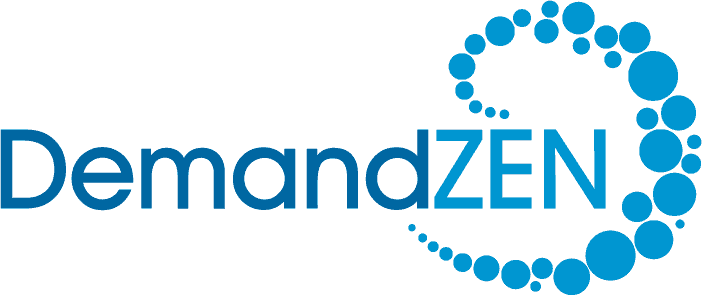Work-From-Home Best Practices to Organize Your Day

Why you need work-from-home best practices
We all know the remote employee stereotype. I’m sure you just conjured up an image of someone in their pajamas eating cheese doodles with a laptop nearby. But that’s not reality. What is reality, is working from home often means you work harder than your in-office companions. Remote employees tend to work longer hours, and are generally more committed to their work since they literally take it home with them. That’s why you need to follow work-from-home best practices to get the most out of your work environment.
While remote work is usually seen as the answer to the “work-life balance” dilemma we’re all so familiar with, remote work has its own challenges. Structure is absolutely vital for work-from-home employees to thrive. Without it, you probably will just sit around in your pajamas and goof off all day. But don’t think your employer won’t catch on.
Here are some work-from-home best practices that deal with how to weave structure into your work-from-home job.
Consistent wake-up time
Productivity all begins with the start of your day. Being remote, you have some freedom as to when those hours begin and end. But if you allow yourself too much leeway, you might find yourself starting work late in the afternoon. That’s fine once in awhile, but it can be difficult to maintain that long-term.
Create a routine for your mornings. Have a target wake up time and a target work start time.
Whether your routine includes going out for breakfast, jogging, hitting the gym, or watching the news, having something begin your day besides work is a great way to get going. This is part of a reward mentality, where you feel like you’ve already checked something off your list before you even get to your work to-dos.
Without a morning commute to get you ready to tackle the day, having a clear start time and routine will keep you in track.
A dedicated workspace
You might be in love with the idea of working from your couch or bed, but that won’t last. To be the most efficient you can be, you need a dedicated workspace where you can avoid distractions.
Whatever those distractions are, you can tune them out if you have a clean area that you enjoy working from. Otherwise, you’re going to realize just how uncomfortable your couch is.
While your workspace needs to be distraction-free and clean, don’t create a sterile work environment. Having a home office means you can make it homey but still workable. Hang up some posters, buy a mousepad with your favorite sports team on it, and put some stickers on your laptop (if it’s yours and not your company’s). After all, you’re going to spend a lot of time in this office. These little pieces should add up to a workspace you love.
If you don’t have the room or ability to create a dedicated workspace, we’ll talk about some other options later in this post.
Project management tool
Tracking your projects is a must in a work-from-home world, and one of the most important work-from-home best practices. In a traditional office setting you might be seated with your team and rely on a whiteboard your supervisor keeps up-to-date. In the remote world, it’s on you to stay on task.
There are plenty of free and subscription-based project management tools out there for you to use. Your company might even have one they are already using where you can track projects and talk to coworkers. Make sure you’re using it as projects are assigned to you. Confirm with coworkers or supervisors that you’re creating projects based on your company’s standards, as some companies have specific titling requirements.
If your work doesn’t provide a project management tool, find one for yourself. It might even behoove you take the initiative to suggest testing and implementing a tool team-wide.
Project management tools also create visibility in an environment where it can be difficult to see what everyone is working on. Rather than sift through emails to get the details of an assignment, put all of the information you have in a single place so you can refer to it as you work. Make the most of your time by implementing a project management tool that encourages you to be a better organizer.
Prioritize
At the beginning of every day, thanks to your project management tool, you should know exactly what it is you need to get done. But what order do you do it in? Prioritization is a necessary skill for remote employees.
Priorities will change as the day or week goes on, like in any working environment, so you need to be ready change it up on a whim.
The easiest way to stay on top of your priorities is to work to completion. If you know something needs to get done by a specific date and the rest of your tasks don’t, work on what needs to get done. And work until it’s finished. Working piecemeal is an okay thing to do when the project isn’t time-sensitive. But when your deadline is the end of the week and you’ve already been working on it off and on without a conclusion, that’s a problem.
This is another opportunity for you to use your project management tool. Assign dates in the tool, and star certain items that are more important than others. It will create a visual map for yourself. This way, if you have two projects due the same day and one of them is highlighted, you know to get that one done first.
Communicate with coworkers
You will likely have time scheduled throughout the week for meetings where you can talk to coworkers and supervisors. However, you should make it a part of your day to reach out. Say hi, let them know what you’re working on, and speak up if you have questions. What’s really important here is not allowing yourself to be forgotten.
It can be difficult to work remotely since there isn’t constant communication with coworkers. In a traditional office, it happens without even trying. However, with a remote position, if you never speak up, they’ll forget you’re there until they need you. Stay engaged throughout the day and form bonds with your coworkers. When this is ingrained as part of your schedule, it becomes easier to accomplish.
Don’t be controlled by distractions
There is something exhausting about working in an office. Being tied to a desk means losing some of your freedom. Since you’re always available to your co-workers in-person, you can be pulled into a meeting just because. It also means co-workers can come to your desk and talk for 30 minutes (or your cubemate) when you would much prefer to get work done.
A lot of these distractions are eliminated when you work from home. Working remotely usually means you attend the meetings that make sense for you to attend. You have the freedom to get up and leave your office for an hour without answering to anyone (within reason). And you chat with your co-workers when you have time. That office gossip tends to dissipate, too.
But new distractions appear when you work from home: kids, pets, things in your house that need fixing. You might not be able to escape these things, even from your dedicated workspace. So you need a way to recognize these distractions and combat them.
Don’t feel that you need to work through distractions if it’s too frustrating. It doesn’t help if you feel like you’re accomplishing nothing. You might consider plugging in your headphones and listening to some relaxing music. Take a mental break if you need one. Refresh, regroup, and tackle the problem later on. Switch gears if you’re able to in the meantime, or step away from the desk.
Take an ice cream break. You deserve it.
Build flexibility into your schedule
One of the benefits of working remotely is that you can change your schedule when you have to. If you need to run to the grocery store after a meeting, do it. Work around that flexibility, but never at the expense of clients or co-workers. Bring your phone and respond to emails while you’re out in case you’re needed.
Don’t be afraid to own your day. This is why we work remotely. Things need to get done outside of the office. As long as you complete your assignments and you’re working a full week, your employer shouldn’t mind what schedule you build for yourself.
So while you have those target start times and to-do lists, don’t be so rigid with them.
Get out of the office once a week
If you’re anything like me, you’ll need to leave your house every once in awhile. Get a subscription to a coworking space if you really miss that human interaction while you’re working. You have a few options from ShareDesk, NextSpace in California, Coworkrs in New York City, and local coworking spaces unique to your area. If you live close to a city, there is bound to be at least one coworking space nearby. This is especially important for those of you who don’t have a dedicated workspace (yet).
This is also a great opportunity to try out all of those coffee shops and brunch places in your area that you’ve been meaning to. You’ll find what works for you, who has the best internet, and you’ll get a break from the four walls of your office.
Coworking trips might also be in your future. Get away while you’re still on the clock. You now have the opportunity to experience other locations without taking PTO. This is great if you have a significant other who travels a lot for work. You can tag along with them and still be in the office, as long as you’re comfortable with making up the possible time difference and can stay focused.
Now that you’re aware of the best work-from-home practices to organize your day, you should be ready to tackle any workday issues. The most important thing to remember is that working from home still means you need to work. And as a remote employee, you have a unique opportunity to truly define your own day as opposed to allowing an office environment to dictate what your workflow looks like.
DemandZEN is a 100 percent distributed company that values the flexibility telecommuting offers. Read more about DemandZEN’s leadership team and philosophy here.
You Might Also Enjoy These Posts
How Employers Can Survive The “Great Resignation”
4 Secrets to a Great Remote SDR Onboarding
Welcome To DemandZEN
DemandZEN specializes in Account-Based Demand Generation and solving the challenges around finding, engaging and converting target accounts into real opportunities for B2B Technology and Services companies.



